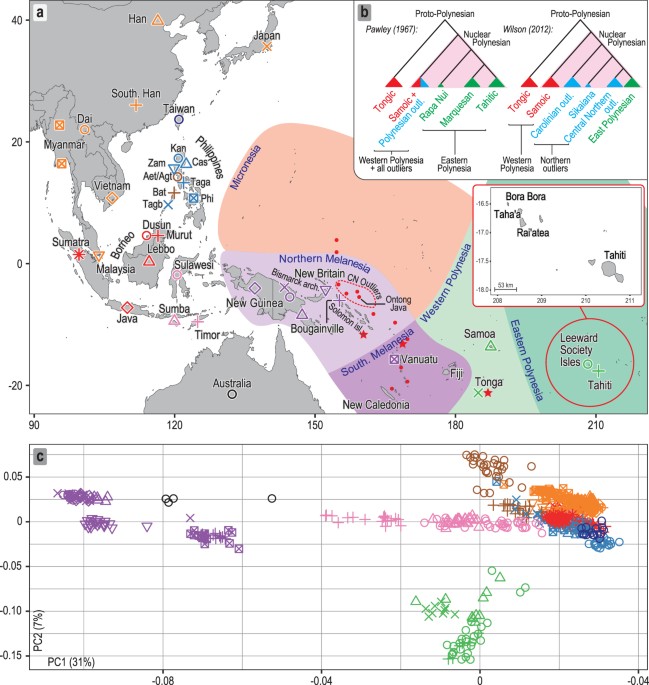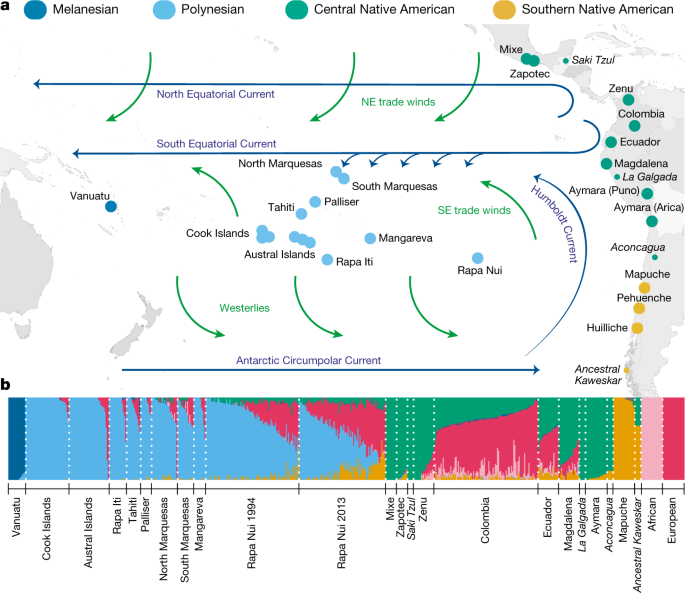There is evidence that maritime history existed prior to Europeans arriving at the “new world”, that is certainly true.The European wants you to believe nobody could be seaferring prior to them. Just becauase they couldnt figure out without massive ships and batman gadgets. Meanwhile the indegenious people were using canoes
And it’s a known fact that Amerindians had canoes. This is probably also how to the islands?
From where did the author get this?
What scientific methodology did he use to get this conclusion?
“Plate techtonic patterns show that the distance between Asia and the Americas is decreasing, not increasing, so the two continents were never connected, but were in fact on opposite sides of the prehistoric landmass Pangea.”
How does the author explain the modern potatoes and the distribution of potatoes all around the world?"Sweet potato is native to South America, but was found cultivated throughout the Pacific islands by early European explorers (Hartmann 2, et al. 1988). A sweet potato, being much less durable than coconut, could not have reached the islands by means other than human transport.
There are some parts of history missing in his statements. Like 90% of historical events aren’t mentioned.
That’s interesting because the Polynesians do show genetic similarities.It is of no coincidence that the South Pacific is home to the great seafaring Polynesian people. Polynesians were sailing far and wide in the South Pacific long before the Europeans. Their culture revolved around it, as in the myth of Ru and Hina, two ancestral Polynesians who sailed the seas and discovered new lands (Pape-au, 1824). Using only the stars, the sun, and knowledge of currents, these people sailed their double-hulled canoes all over the South Pacific. Colonization of the islands in the South Pacific is believed to have occurred from west to east, despite the presence of easterly trade winds and currents. Nevertheless, linguistic, cultural, physical and archaeological similarities betwen Pacific islanders and Asians support this theory (Finney, 1976).
“Genetic analysis of their modern descendants shows that people from the Pacific Islands and South America interacted long before Europeans arrived”
(Brian Handwerk July 8, 2020)
/https%3A%2F%2Ftf-cmsv2-smithsonianmag-media.s3.amazonaws.com%2Ffiler%2F69%2F57%2F6957ebd3-d4fc-4b8a-ab64-5e7fb2b3c14b%2Fjavier_blanco_img_1793_a_low_tongariki.jpeg)
Native Americans and Polynesians Met Around 1200 A.D.
Genetic analysis of their modern descendants shows that people from the Pacific Islands and South America interacted long before Europeans arrived
Ben Finney proved that long-range sailing without navigational instrments could be done successfully in 1976 when he sailed a Polynesian replica double-hulled canoe from Hawaii to Tahiti and back, a distance of 2,393 miles each way (Fig. 1) (Finney, 1976). The trip south took 30 days, and the trip back took only 22 days."
The distance was probably not that far off for them to manage.

History is alive
Find out more about the shows on Sky HISTORY's TV channel, with plenty to read and watch on your favourite historical topics.
Is this in reference to Polynesians? Polynesians are Asians with a specific gene pool.Theres photographic evidence that there are "black"/African looking Pacific Islanders. Along with written and picture evidence of what looks to be black natives. But people dont seem to understand we have diverse phenotypes and people of the same tribe can look like a different people.
There would have been a genetic drift causing variation in the gene pool, after thousands upon thousands of years.
The Bering Strait happed during the lower Paleolithic. If so these people who have had a genetic distance by now, due to the many mutations, like Polynesians etc.So there were probably also black natives among those that crossed the Beiring Strait.
*Although the lineage containing this haplotype must have originated in Africa, C3 is rare in Africa (1.0% in MKK) but widely distributed in East Asia, the New World, and Oceania.*
[...]
“Frequencies display strong population differentiation, with the derived light skin pigmentation allele (A111T) fixed or nearly so in all European populations and *the ancestral allele predominant in sub-Saharan Africa and East Asia (Lamason et al. 2005; Norton et al. 2007).*
[...]
“Phased haplotypes were retrieved from HapMap, Release 21. For phylogenetic analysis, graphs were drawn by the use of a simple nearest-neighbor approach and rooted by the use of ancestral alleles determined by comparison with other primate sequences.”
[...]
"Of the remaining 10 common core haplotype groups, all ancestral at rs1426654, *eight clearly have their origins in Africa* (Figure 3B, Figure 4, and Table S4). Three early diverging haplotypes, C1, C2, and C4, are rare outside of Africa and clearly originated there."
*”In the lineage containing the majority of haplotypes, each of the three branches, containing C5, C6-C7, and C8-C11, give strong evidence of having originated in Africa.* C5 reaches its greatest abundance in West Africa and is rare outside of Africa. Within the other two branches, C6 and C9, which are the most common haplotypes in Africa, are also common worldwide, whereas C7 is abundant in East Asia and much less common but widespread in Africa.”
[...]
“Our dating for this haplotype is consistent with a non-African origin. The most likely location for the origin of C11 is, therefore, within the region in which it is fixed or nearly so. As both models for the origin of C11 imply that C3 and C10 were present in ancestors of Europeans, the observed and inferred *distributions of these autosomal haplotypes are consistent with the single-out-of- Africa hypothesis derived using uniparental markers* (Oppenheimer 2003; Macaulay et al. 2005).”
(Victor A. Canfield et al., Molecular Phylogeography of a Human Autosomal Skin Color Locus Under Natural Selection 2013)
It depends on what you consider Black looking?I dont buy the narrative all the black looking natives just dissapeared.
A biracial child (mulatto) can have the appearance of a North African. But it doesn’t make them a North African.

Investigating the origins of eastern Polynesians using genome-wide data from the Leeward Society Isles - Scientific Reports
The debate concerning the origin of the Polynesian speaking peoples has been recently reinvigorated by genetic evidence for secondary migrations to western Polynesia from the New Guinea region during the 2nd millennium BP. Using genome-wide autosomal data from the Leeward Society Islands, the...

Native American gene flow into Polynesia predating Easter Island settlement - Nature
Genomic analyses of DNA from modern individuals show that, about 800 years ago, pre-European contact occurred between Polynesian individuals and Native American individuals from near present-day Colombia, while remote Pacific islands were still being settled.
It’s indeed true that in some places in the Americas newly arrived Africans mixed with the indigenous Amerindian populations.I would buy they got mixed in with slaves from Africa over the years.
However, we see untouched Amerindian communities being found, in the Amazon region, from time to time.
So we have a clear understanding of what they looked like then and now.
It depends on what is considered Black looking. Amerindians can have dark skin, wide noses, full lips. They at times do have a negroe appearance, with somewhat epicanthal folds (slanted eyes).I dont put a number on it because that cant be done. But to deny it would be denying there were no black looking natives in America prior to slavery.
These people show to have genetic similarities to some Asian populations, but are distance due to mutations. So not only do they have physical just the physical appearances.
With that being said, what was the life expectancy of the average enslaved African in the 13 colonies?
There’s not doubts. It lacks understanding of world history.Which would take a bold person/people to make that statement,it’s illogical and not based in fact. Im only providing reasonable doubt on the Europeans narrative,not making hardline declarations
Last edited:





